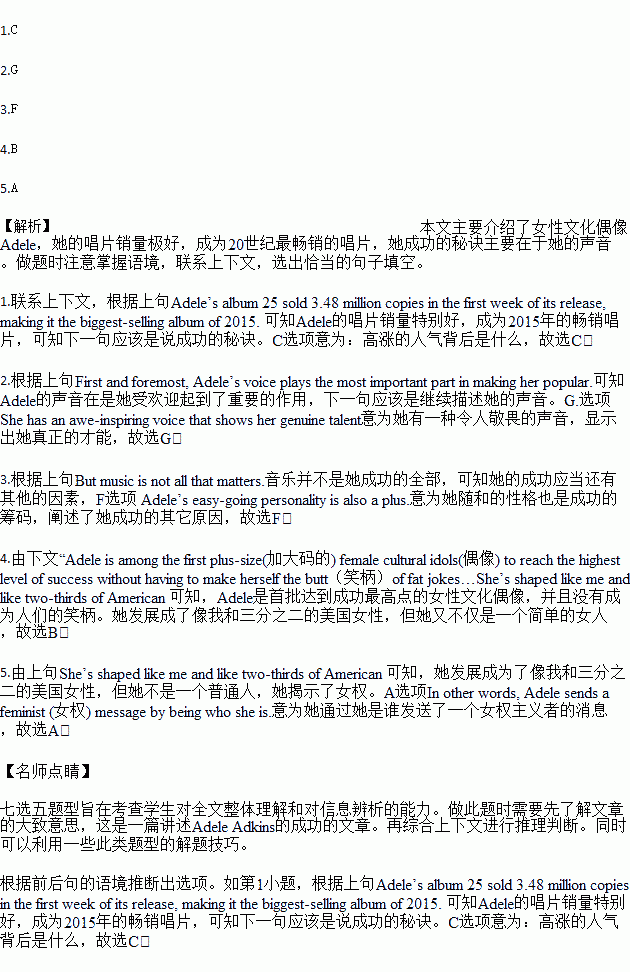题目内容
Successful female singers tend to have slim figures and pretty faces. But even if British singer Adele Adkins, 27, doesn’t quite fit into this image, it hasn’t stopped her from a smashing success. Adele’s album 25 sold 3.48 million copies in the first week of its release, making it the biggest-selling album of 2015. 1.
First and foremost, Adele’s voice plays the most important part in making her popular.2. As the Chicago Tribune commented, she sings about her personal struggles sincerely with emotional words that invite everyone into her world. The pain and longing in her songs satisfy a universal need for love. It is this sense of ‘we’ve been here before’ that makes Adele.
But music is not all that matters. 3. In a comedy show, Adele was shown to be the one who could make quarrelling relatives at the Thanksgiving dinner table put their differences aside. She collected many life-long fans with her girl-next-door charm.
4.Jillian Mapes wrote about this on the New York magazine site Vulture: “Adele is among the first plus-size(加大码的) female cultural idols(偶像) to reach the highest level of success without having to make herself the butt(笑柄)of fat jokes…She’s shaped like me and like two-thirds of American women.”5.
A. In other words, Adele sends a feminist (女权) message by being who she is.
B. Adele is not just a woman but an everywoman(普通女人).
C. What is behind the soaring popularity?
D. Adele’s hard work also matters.
E. Do you want to know more about the life of Adele?
F. Adele’s easy-going personality is also a plus.
G. She has an awe-inspiring voice that shows her genuine talent.
 口算题天天练系列答案
口算题天天练系列答案
